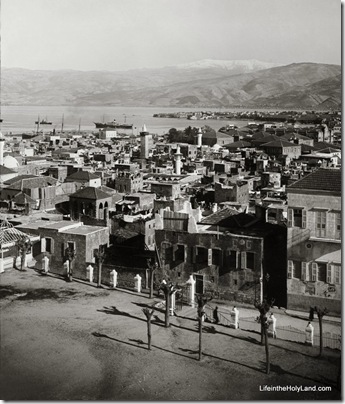One of these days I’m going to get to Beirut, Lebanon. Until then, I’m going to imagine that it looks just like this.
J. L. Porter visited the city in the 1870s and wrote about it in The Giant Cities of Bashan and Syria’s Holy Places: “The site of Beyrout is among the finest in the world. From the base of Lebanon a triangular plain juts into the sea, and round a little bay on its northern shore nestles the nucleus of the city, engirt by old walls and towers. Behind the city the ground rises with a gentle slope, and is thickly studded with villas of every graceful form which Eastern fancy, grafted on Western taste, can devise; and all embosomed in the foliage of the orange, mulberry, and palm. In spring time and summer Beyrout is beautiful. The glory of Lebanon behind, a mantle of verdure wrapped closely round it, fringed by a pearly strand; in front the boundless sea, bright and blue as the heavens that over-arch it. Such is Beyrout” (282).
The photo and quotation are both taken from the Lebanon, Syria, and Jordan volume of The American Colony and Eric Matson Collection (Library of Congress, LC-matpc-10591).



